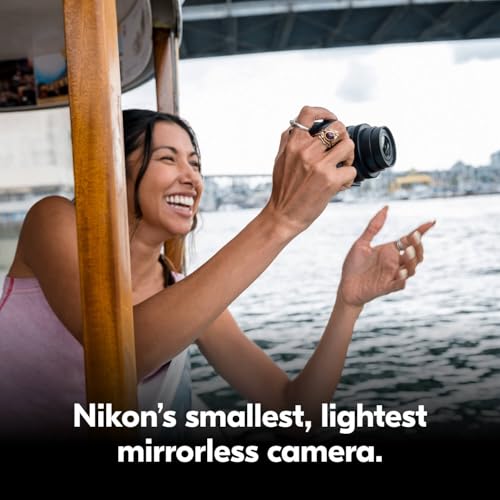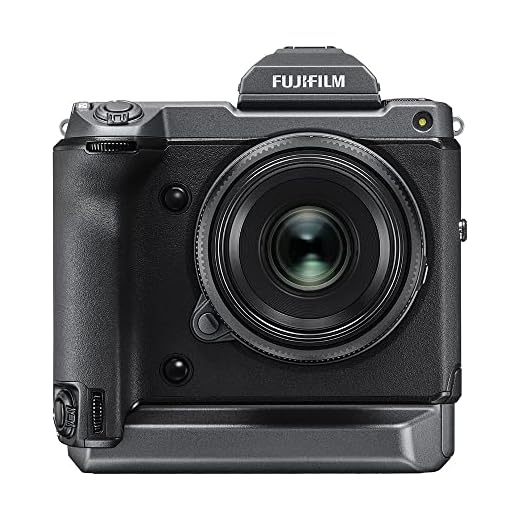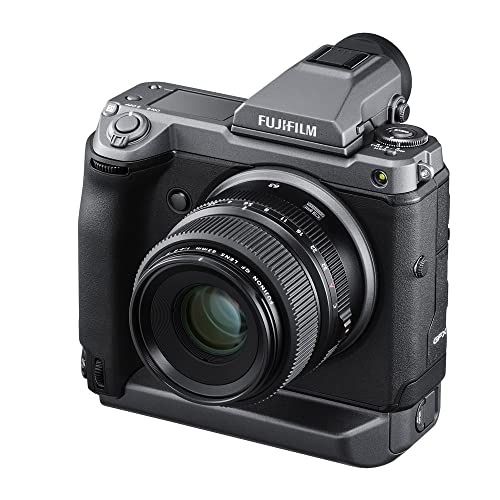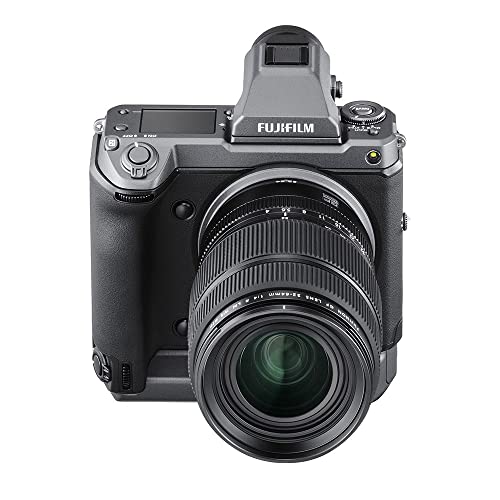
If you are a photography enthusiast looking to take your skills to the next level, investing in a digital medium format camera is a great option. These cameras offer unparalleled image quality and detail, thanks to their larger image sensors compared to traditional DSLRs or mirrorless cameras. However, they are often associated with a high price tag, making them out of reach for many photographers.
Fortunately, there are now entry-level options available in the digital medium format camera market, which offer a more affordable way to step into this realm of photography. These cameras provide a bridge between the world of traditional DSLRs and high-end medium format systems, offering excellent image quality at a more accessible price point.
One of the best entry-level digital medium format cameras available today is the Fujifilm GFX 50R. This camera combines a compact and lightweight design with a high-resolution 51.4-megapixel sensor, delivering stunning image quality and detail. Its rangefinder-style body makes it a joy to use, and its 3.2-inch tilting touchscreen allows for easy composition and reviewing of images. With its impressive ISO range, you can confidently shoot in various lighting conditions without sacrificing image quality.
Another top contender in the entry-level digital medium format camera segment is the Hasselblad X1D II 50C. This camera boasts a sleek and stylish design, housing a 50-megapixel sensor that produces images with exceptional clarity and color accuracy. Its large and high-resolution electronic viewfinder offers a seamless shooting experience, while its intuitive touchscreen interface makes navigation a breeze. With its built-in Wi-Fi and USB-C connectivity, you can easily transfer and share your images on the go.
Overall, both the Fujifilm GFX 50R and Hasselblad X1D II 50C are excellent options for photographers looking to venture into the world of medium format photography. These cameras offer exceptional image quality, user-friendly interfaces, and versatile features, all at a more affordable price compared to their higher-end counterparts. Whichever option you choose, you can be confident that you will be able to capture stunning images with rich detail and colors, taking your photography skills to new heights.
The benefits of using an entry level digital medium format camera
As a professional photographer, I have come to recognize the numerous benefits of using an entry level digital medium format camera in my work. These cameras offer a level of image quality and detail that far surpasses what can be achieved with traditional full-frame cameras or even high-end DSLRs.
One of the main advantages of an entry level digital medium format camera is its larger image sensor. This larger sensor allows for greater dynamic range, better low light performance, and more detail in both the highlights and shadows of an image. The result is a final photograph that is rich in detail and tone, with incredibly smooth gradations.
Additionally, the larger sensor size of a digital medium format camera means that I can take advantage of a shallower depth of field. This allows me to create images with a beautiful, creamy bokeh and isolate my subject from the background, creating a sense of depth and separation that is difficult to achieve with smaller sensor cameras.
Another benefit of using an entry level digital medium format camera is its ability to capture a wider dynamic range. This means that I can capture images with a greater range of tonal values, preserving detail in both the highlights and shadows. This makes the editing process much easier, as I have more latitude to adjust exposure and bring out details in post-processing.
In conclusion, an entry level digital medium format camera offers a multitude of benefits for photographers. Its larger image sensor allows for greater detail, dynamic range, and low light performance, while its shallow depth of field and wider dynamic range enable the creation of stunning and impactful images. Investing in an entry level digital medium format camera can truly elevate the quality of your work and take your photography to new heights.
Why investing in an entry level digital medium format camera is a great choice for photographers
As a photographer, I understand the importance of having the right equipment to capture stunning images. One of the best choices I made was investing in an entry level digital medium format camera. This decision has truly elevated the quality of my photographs and opened up new creative possibilities that were previously out of reach.
One of the main advantages of an entry level digital medium format camera is its superior image quality. With a larger sensor size compared to traditional full-frame cameras, these medium format cameras are able to capture an incredible amount of detail and produce images with exceptional clarity and sharpness. This means that even when zoomed in or printing large-format prints, the level of detail and tonal range remains outstanding, allowing me to create truly stunning and professional-grade photographs.
Another benefit of investing in an entry level digital medium format camera is the increased dynamic range. The larger sensor allows for a greater range between the darkest shadows and brightest highlights in an image, resulting in more balanced and evenly exposed photos. This is particularly useful in situations with challenging lighting conditions, such as landscape photography or high-contrast scenes. The ability to retain detail in both bright and dark areas is invaluable for capturing the full beauty of a scene.
Furthermore, entry level digital medium format cameras typically offer improved color reproduction. The larger sensor and advanced image processing technology allow for more accurate and true-to-life colors. This means that the colors in my photographs look rich and vibrant, with excellent color accuracy and a natural-looking tone. Whether I’m photographing landscapes, portraits, or still life, the color rendition of my medium format camera always impresses me.
In conclusion, investing in an entry level digital medium format camera is a great choice for photographers looking to take their photography to the next level. The superior image quality, increased dynamic range, and improved color reproduction make these cameras a worthy investment for capturing stunning, professional-grade photographs. The ability to capture more detail, retain highlights and shadows, and reproduce colors accurately opens up a whole new world of creativity and possibilities. So, if you’re serious about photography and want to create images that truly stand out, a digital medium format camera might be the perfect choice for you.
Top features to consider when choosing an entry level digital medium format camera
When looking for an entry level digital medium format camera, it’s important to consider certain features that can enhance the overall performance and image quality. Here are some top features to look for:
1. Sensor Size and Resolution
The sensor size and resolution play a crucial role in capturing high-quality images with a greater level of detail. A larger sensor can offer better low-light performance and dynamic range, while a higher resolution allows for larger print sizes and more flexibility in post-processing.
2. Image Processor
An efficient and powerful image processor can significantly impact the camera’s performance and speed. Look for a camera with a fast processor that can handle the large files produced by medium format sensors without compromising on image quality.
3. Autofocus System
An effective autofocus system is essential to ensure accurate and quick focusing, especially in fast-paced shooting situations. Look for a camera with advanced autofocus capabilities, such as improved tracking and eye detection, to capture sharp and well-focused images.
4. Lens Compatibility
The availability of a wide range of compatible lenses is important for expanding your creative possibilities. Check if the camera you are considering offers a good selection of lenses in various focal lengths to suit your shooting needs.
5. Ergonomics and Handling
A comfortable and intuitive camera design can greatly enhance the user experience. Consider factors such as the size, weight, grip, and button layout to ensure that the camera feels comfortable and easy to use, especially for extended shooting sessions.
6. Connectivity Options
Having different connectivity options, such as Wi-Fi or Bluetooth, can make it easier to transfer and share your images directly from the camera to other devices. Look for a camera that offers seamless connectivity features to streamline your workflow.
7. Price and Value
Lastly, consider the overall value for money when choosing an entry level digital medium format camera. Compare the features, performance, and price of different models to find the best balance between affordability and functionality.
By considering these top features, you can make an informed decision when choosing the best entry level digital medium format camera that suits your photography needs and budget.
What to consider when choosing the perfect entry level digital medium format camera for your needs
When looking for an entry level digital medium format camera, there are a few key factors to consider. These factors will help determine which camera is the perfect fit for your needs and preferences.
One important factor to consider is the camera’s sensor size. Digital medium format cameras have larger sensors compared to their full-frame or APS-C counterparts. A larger sensor allows for higher resolution images with greater detail and dynamic range. It also provides better low-light performance and greater flexibility in post-processing.
Another factor to consider is the camera’s resolution. Entry level digital medium format cameras typically offer resolutions ranging from 40 to 50 megapixels, which is significantly higher than most full-frame cameras. This higher resolution allows for greater flexibility in cropping and printing large format images without sacrificing image quality.
In addition to sensor size and resolution, lens options should also be considered. Medium format systems often have a wide range of lens options available, allowing for greater versatility and creativity in your photography. Whether you prefer wide-angle lenses for landscape photography or telephoto lenses for wildlife and sports, having a variety of lenses to choose from can greatly enhance your photographic capabilities.
Lastly, it’s important to consider your budget when choosing an entry level digital medium format camera. These cameras can be quite expensive, so it’s important to determine how much you’re willing to spend. While there are more affordable options available, it’s important to keep in mind that investing in a digital medium format camera is a long-term investment, so it may be worth saving up for a higher-end model if your budget allows.
In conclusion, when choosing the perfect entry level digital medium format camera for your needs, it’s important to consider factors such as sensor size, resolution, lens options, and budget. By carefully considering these factors, you can find a camera that meets your requirements and allows you to take your photography to the next level.
Comparing the Best Entry Level Digital Medium Format Cameras on the Market
As a photography enthusiast, I have always been fascinated by the image quality and detail that medium format cameras produce. However, the high price of these professional-grade cameras often discouraged me from considering them. Luckily, there are now entry-level digital medium format cameras available on the market that offer exceptional image quality at a more affordable price point.
Two of the best entry level digital medium format cameras that I have personally researched and compared are the Fujifilm GFX 50R and the Hasselblad X1D II 50C. Both cameras boast a large 51.4-megapixel sensor, which is significantly larger than what you would find in full-frame or APS-C cameras. This larger sensor allows for greater detail and dynamic range, resulting in stunning image quality.
Image Quality
When it comes to image quality, both the Fujifilm GFX 50R and the Hasselblad X1D II 50C deliver exceptional results. With their large sensors, they capture an incredible amount of detail and produce images with excellent dynamic range. However, the Hasselblad X1D II 50C does have a slight edge in terms of color accuracy and tonal rendering.
Ease of Use
In terms of user-friendliness, the Fujifilm GFX 50R takes the lead. It has a more intuitive menu system and a familiar layout for those who are used to Fujifilm’s X-series cameras. The Hasselblad X1D II 50C, on the other hand, has a simpler and sleeker design, but its menu system can be a bit more complicated to navigate for beginners.
Extras and Features
Both cameras offer a range of features and extras that make them versatile tools for photographers. The Fujifilm GFX 50R has a built-in electronic viewfinder, a tilting touchscreen, and a weather-sealed body, making it suitable for outdoor photography. The Hasselblad X1D II 50C also has a built-in electronic viewfinder and a tilting touchscreen, but it offers a wider range of lenses and a faster autofocus system.
In conclusion, both the Fujifilm GFX 50R and the Hasselblad X1D II 50C are excellent entry-level digital medium format cameras that offer exceptional image quality. The choice between the two ultimately depends on the individual’s preferences and needs. Whether you prioritize user-friendliness or additional features, both cameras are capable of delivering stunning results for photographers looking to venture into the medium format realm.
Explore the Best Entry Level Digital Medium Format Cameras for Your Photography Style
As a photographer, choosing the right camera that suits your photography style is crucial. If you’re looking to step up your game and venture into medium format photography, there are several options available that fit the bill. Let’s explore some of the top entry-level digital medium format cameras on the market and see which one aligns perfectly with your artistic vision.
Fujifilm GFX 50R
The Fujifilm GFX 50R offers an exceptional balance between portability and image quality. With its compact and lightweight design, it’s perfect for photographers who are constantly on the move. Equipped with a 51.4-megapixel medium format sensor, the GFX 50R delivers stunningly detailed images that will bring your vision to life. Its intuitive controls and intuitive menu system make it an ideal choice for both beginner and intermediate photographers.
Hasselblad X1D II 50C
For those seeking the ultimate image quality and craftsmanship, the Hasselblad X1D II 50C is a true game-changer. Featuring a sleek and elegant design, this camera is not only a joy to use, but it also produces unparalleled image quality. With its 50-megapixel sensor and Hasselblad’s renowned color science, the X1D II 50C captures every detail and color nuance with remarkable precision. Whether you’re shooting landscapes, portraits, or fashion, this camera will elevate your photography to new heights.
Pentax 645Z
If you’re a photographer who values versatility and ruggedness, the Pentax 645Z might be the perfect fit for you. With its weather-sealed body, this camera can withstand even the harshest shooting conditions, allowing you to capture breathtaking images in any environment. Boasting a 51.4-megapixel sensor, the Pentax 645Z delivers exceptional image quality and dynamic range, making it an excellent choice for landscape, wildlife, and studio photography. Its ergonomic design and user-friendly interface provide a comfortable shooting experience that will inspire your creativity.
Conclusion
When it comes to entry-level digital medium format cameras, these options offer fantastic image quality and features for photographers of all levels. Whether you prioritize portability, image quality, or versatility, there’s a camera out there that suits your photography style. Take the time to explore these options, compare their features, and find the one that resonates with your artistic vision. With the right camera in hand, you’ll be well-equipped to take your photography to the next level.
Tips for Getting the Most Out of Your Entry Level Digital Medium Format Camera
As a photographer, I understand the importance of having the right equipment to capture stunning images. If you have recently invested in an entry level digital medium format camera, here are some tips to help you maximize its potential:
1. Understand the advantages of medium format
Before diving into using your new camera, take some time to understand the advantages that medium format photography offers. The larger sensor size and increased dynamic range can result in sharper images with more detail and richer colors. Familiarize yourself with the differences between full frame and medium format and learn how to leverage these advantages in your photography.
2. Master the exposure triangle
Knowing how to achieve the perfect exposure is crucial in any type of photography. With a medium format camera, understanding the exposure triangle becomes even more important. Take the time to learn how ISO, aperture, and shutter speed work together to create the desired exposure. Experiment with different settings to find the optimal balance for your specific shooting conditions.
3. Utilize the camera’s autofocus system
Entry level digital medium format cameras often have advanced autofocus systems that can greatly assist you in achieving sharp focus. Familiarize yourself with the autofocus modes and settings available on your camera. Experiment with single point autofocus, zone autofocus, and tracking autofocus to determine which works best for different shooting situations.
4. Explore the benefits of shooting in RAW
Shooting in RAW format allows you to capture the maximum amount of data from your camera’s sensor. This gives you greater flexibility in post-processing, allowing you to adjust exposure, white balance, and other settings without degrading image quality. Take advantage of your camera’s ability to shoot in RAW and experiment with different post-processing techniques to enhance your images.
5. Invest in quality lenses
In order to fully utilize the capabilities of your entry level digital medium format camera, it’s important to invest in quality lenses. The lens you choose can greatly impact the sharpness, clarity, and overall image quality. Research and invest in lenses that are designed specifically for medium format photography to get the best results.
By understanding and implementing these tips, you’ll be well on your way to getting the most out of your entry level digital medium format camera. Experiment, practice, and continue to learn to improve your photography skills and capture stunning images that showcase the true capabilities of medium format photography.
Maximizing Performance and Capabilities
Now that you have invested in the best entry level digital medium format camera, it is important to learn how to maximize its performance and capabilities. By understanding the features and functions of your camera, you can take full advantage of its potential and capture stunning images.
1. Familiarize yourself with the camera settings:
Take the time to read the camera’s user manual and understand the various settings and options available. This will enable you to customize the camera to suit your shooting style and preferences.
2. Experiment with different shooting modes:
Your camera is likely to have a variety of shooting modes, such as aperture priority, shutter priority, and manual mode. Experimenting with these modes will help you understand how they affect the exposure and depth of field in your images.
3. Master manual focus and autofocus:
Digital medium format cameras often have exceptional autofocus capabilities. However, there may be times when manual focus is preferred or necessary. Learning how to switch between autofocus and manual focus, and understanding when to use each, will greatly enhance your photography skills.
4. Utilize exposure compensation:
Exposure compensation allows you to adjust the exposure settings of your camera to achieve the desired brightness in your images. By experimenting with exposure compensation, you can attain more accurate exposures in challenging lighting conditions.
5. Take advantage of the camera’s built-in features:
Many digital medium format cameras come equipped with additional features, such as image stabilization, multiple exposure mode, and built-in filters. Understanding how to use these features will help you expand your creative possibilities and capture unique shots.
Conclusion:
By familiarizing yourself with the camera settings, experimenting with different shooting modes, mastering manual focus and autofocus, utilizing exposure compensation, and taking advantage of the camera’s built-in features, you can maximize the performance and capabilities of your entry level digital medium format camera. Remember to practice regularly and push the boundaries of your creativity to truly unlock the potential of your camera.
Best entry level digital medium format camera
Features
| Part Number | 600023590 |
| Model | GFX100 II |
| Warranty | 1 Year Manufacturer |
| Color | Black |
| Release Date | 2023-09-26T00:00:01Z |
| Price history for Fujifilm GFX100 II Mirrorless Medium Format Camera Body | |
|---|---|
|
Latest updates:
|
|
| Price history for Nikon Z 30 DX-Format Mirrorless Camera Body w/NIKKOR Z DX 12-28mm f/3.5-5.6 PZ VR | |
|---|---|
|
Latest updates:
|
|
| Price history for Nikon D7500 DX-Format Digital SLR Body | |
|---|---|
|
Latest updates:
|
|
| Price history for Fujifilm GFX 100 102MP Medium Format Digital Camera (Body Only),Black | |
|---|---|
|
Latest updates:
|
|
Features
| Part Number | 6xloupe |
| Model | etone6xloupe-sub |
| Is Adult Product |
| Price history for Fujifilm GFX 50R 51.4MP Mirrorless Medium Format Camera (Body Only) | |
|---|---|
|
Latest updates:
|
|
| Price history for Nikon D7500 20.9MP DX-Format Wi-Fi 4K Digital SLR Camera Body - (Renewed) | |
|---|---|
|
Latest updates:
|
|
| Price history for Holga 120GCFN White Medium Format Film Camera with Built-in Flash with Ilford HP5 120 Black and White Film Kodak Batteries Accessories Bundle | |
|---|---|
|
Latest updates:
|
|
Question and answers:
What is the best entry level digital medium format camera?
The Fujifilm GFX 50R is considered to be the best entry level digital medium format camera. It offers a 51.4 megapixel sensor, a compact and lightweight body, and a range of high-quality lenses to choose from. It also has a tilting LCD screen and a weather-sealed body, making it suitable for various shooting conditions.
What features should I look for in an entry level digital medium format camera?
When looking for an entry level digital medium format camera, it is important to consider the sensor size, resolution, image quality, and lens options available. You should also consider factors such as the camera’s usability, build quality, and price. Some popular entry level options include the Fujifilm GFX 50R, Hasselblad X1D II 50C, and the Pentax 645Z.
What are the advantages of using a digital medium format camera?
Using a digital medium format camera offers several advantages over traditional full-frame or APS-C cameras. These advantages include higher resolution images, better dynamic range, improved color reproduction, and the ability to capture more detail in your photos. Digital medium format cameras are also often used by professional photographers for commercial or studio work where image quality is of utmost importance.
What is the price range for entry level digital medium format cameras?
The price range for entry level digital medium format cameras can vary depending on the brand, features, and included accessories. Generally, you can expect to pay anywhere from $4,000 to $10,000 for an entry level digital medium format camera. It is worth noting that lenses for medium format cameras can also be quite expensive, so it is important to consider the total cost of ownership when purchasing a camera in this category.








































































